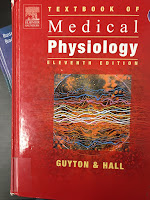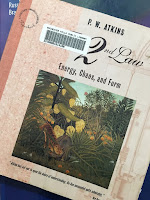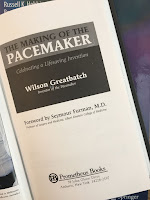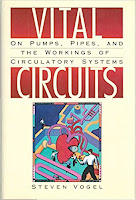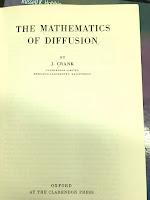Although the term does not appear in the index (oops…), the cyclotron is mentioned in Intermediate Physics for Medicine and Biology at the end of Section 17.9 (Radiopharmaceuticals and Tracers).
Other common isotopes are 201Tl, 67Ga, and 123I. Thallium, produced in a cyclotron, is chemically similar to potassium and is used in heart studies, though it is being replaced by 99mTc-sestamibi and 99mTc-tetrofosmin. Gallium is used to image infections and tumors. Iodine is also produced in a cyclotron and is used for thyroid studies.Cyclotrons are again mentioned in Section 17.14 (Positron Emission Tomography)
Positron emitters are short-lived, and it is necessary to have a cyclotron for producing them in or near the hospital. This is proving to be less of a problem than initially imagined. Commercial cyclotron facilities deliver isotopes to a number of nearby hospitals. Patterson and Mosley (2005) found that 97% of the people in the United States live within 75 miles of a clinical PET facility.(Note: on page 513 of our book, we omitted the word “emission” from the phrase “positron emission tomography” in the title of the Patterson and Mosley paper; again, oops…)
Perhaps the best place in Intermediate Physics for Medicine and Biology to discuss cyclotrons would be after Section 8.1 (The Magnetic Force on a Moving Charge). Below is some sample text that serves as a brief introduction to cyclotrons.
8.1 ½ The CyclotronSince Intermediate Physics for Medicine and Biology is not a history book, I didn’t mention the interesting history of the cyclotron, which was invented by Ernest Lawrence in the early 1930s, for which he received the Nobel Prize in Physics in 1939. The American Institute of Physics Center for the History of Physics has a nice website about Lawrence’s invention. The same story is told, perhaps more elegantly, in Richard Rhodes’ masterpiece The Making of the Atomic Bomb (see Chapter 6, Machines). Lawrence played a major role in the Manhattan Project, using modified cyclotrons as massive mass spectrometers to separate the fissile uranium isotope 235U from the more abundant 238U.
One important application of magnetic forces in medicine is the cyclotron. Many hospitals have a cyclotron for the production of radiopharmaceuticals, or for the generation of positron emitting nuclei for use in Positron Emission Tomography (PET) imaging (see Chapter 17).
Consider a particle of charge q and mass m, moving with speed v in a direction perpendicular to a magnetic field B. The magnetic force will bend the path of the particle into a circle. Newton’s second law states that the mass times the centripetal acceleration, v2/r, is equal to the magnetic force
m v2/r = q v B . (8.4a)
The speed is equal to circumference of the circle, 2 π r, divided by the period of the orbit, T. Substituting this expression for v into Eq. 8.4a and simplifying, we find
T = 2 π m/(q B) . (8.4b)
In a cyclotron particles orbit at the cyclotron frequency, f = 1/T. Because the magnetic force is perpendicular to the motion, it does not increase the particles’ speed or energy. To do that, the particles are subjected periodically to an electric field that must change direction with the cyclotron frequency so that it is always accelerating, and not decelerating, the particles. This would be difficult if not for the fortuitous disappearance of both v and r from Eq. 8.4b, so that the cyclotron frequency only depends on the charge-to-mass ratio of the particles and the magnetic field, but not on their energy.
Typically, protons are accelerated in a magnetic field of about 1 T, resulting in a cyclotron frequency of approximately 15 MHz. Each orbit raises the potential of the proton by about 100 kV, and it must circulate enough times to raise its total energy to at least 10 MeV so that it can overcome the electrostatic repulsion of the target nucleus and cause nuclear reactions. For example, the high-energy protons may be incident on a target of 18O (a rare but stable isotope of oxygen), initiating a nuclear reaction that results in the production of 18F, an important positron emitter used in PET studies.
Finally, I think it’s appropriate that Intermediate Physics for Medicine and Biology should have a section about the cyclotron, because my coauthor Russ Hobbie (who was the sole author of the first three editions of the textbook) obtained his PhD while working at the Harvard cyclotron. Thus, an unbroken path leads from Ernest Lawrence and the cyclotron to the publication of our book and the writing of this blog.
